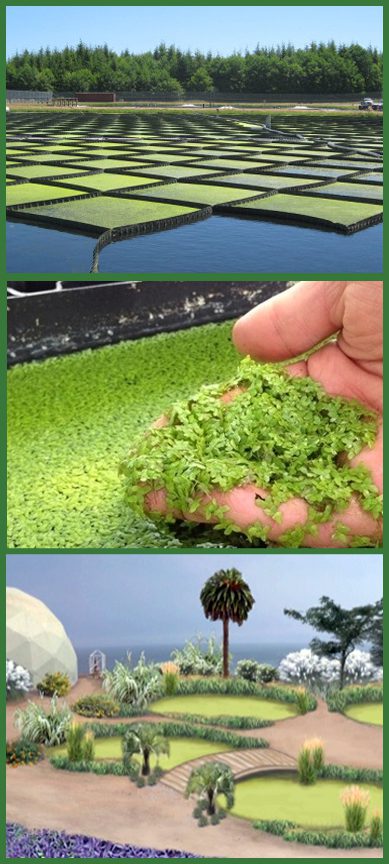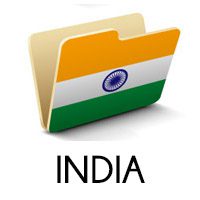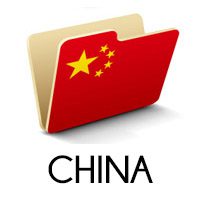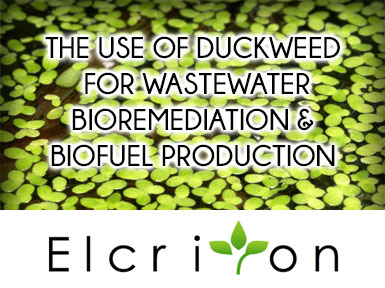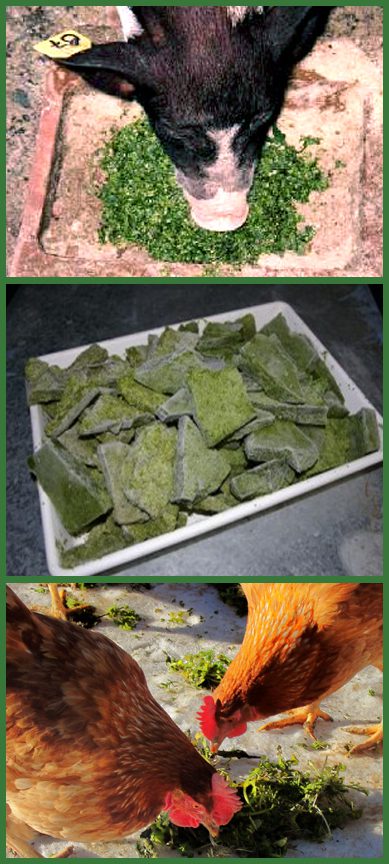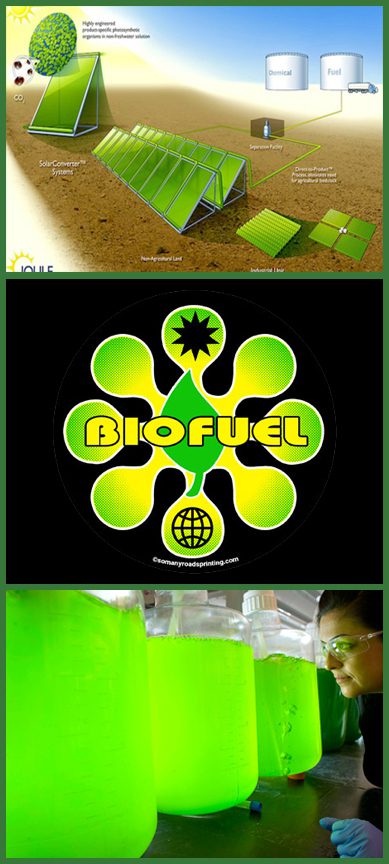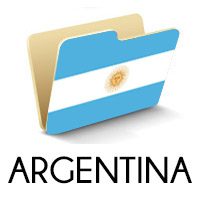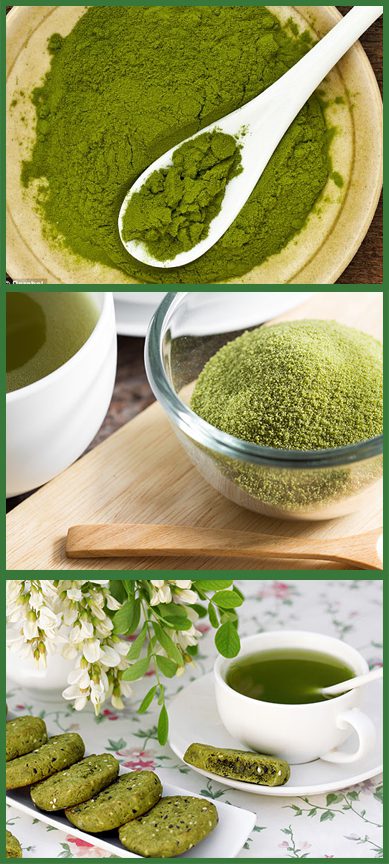WHAT IS DUCKWEED?
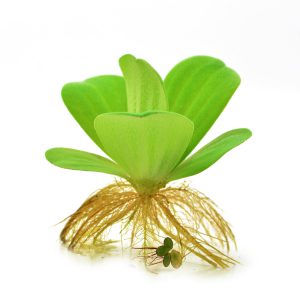 Duckweed is a small floating aquatic plant which has the ability to remove excess nutrients, namely nitrates and phosphates, from the water. It is a strong bio-remediator, able to turn wastewater and farm run off into water capable of sustaining a balanced eco-system once again. It is a rapid grower, able to double its size every 16 hours. Best of all, it is useful. Duckweed has a high protein content and can be used as a high protein additive to poultry and livestock feed and is being developed as a protein source for humans as well. It can also be used as a bio-fuel, an essential one because it has more starch rendering it more effective than corn and it requires no landmass to grow, therefore making it a sustainable source of fuel as land continues to be utilized as living and farming space. In short, its a natural solution to polluted water with benefits which allow it to be self-sustaining. So using it is a win-win situation.
Duckweed is a small floating aquatic plant which has the ability to remove excess nutrients, namely nitrates and phosphates, from the water. It is a strong bio-remediator, able to turn wastewater and farm run off into water capable of sustaining a balanced eco-system once again. It is a rapid grower, able to double its size every 16 hours. Best of all, it is useful. Duckweed has a high protein content and can be used as a high protein additive to poultry and livestock feed and is being developed as a protein source for humans as well. It can also be used as a bio-fuel, an essential one because it has more starch rendering it more effective than corn and it requires no landmass to grow, therefore making it a sustainable source of fuel as land continues to be utilized as living and farming space. In short, its a natural solution to polluted water with benefits which allow it to be self-sustaining. So using it is a win-win situation.
INTERNATIONALLY RECOGNIZED BIO-REMEDIATOR
While some may bemoan duckweed’s ability to propagate quickly, others have been quick to 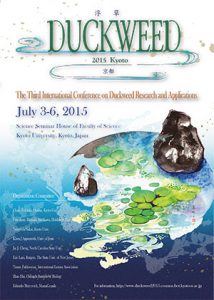 utilize this to their benefit. Duckweed has gained international interest as a bio-remediator. Throughout the world it is being used with great success for a variety
utilize this to their benefit. Duckweed has gained international interest as a bio-remediator. Throughout the world it is being used with great success for a variety
of purposes. In Brazil and Argentina, the swine farms 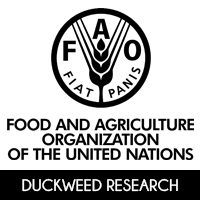 are utilizing duckweed’s ability to handle their manure lagoons. Uganda is working in cooperation with American investors to grow duckweed as a source of protein for humans. India is not only using duckweed to clean up thier waste ponds, but have been able to use the duckweed as fish food and have begun to successfully farm fish as a result, solving both pollution and economic issues. America is leading the industry in exploring duckweed as a source for bio-fuel. This kind of success has attracted has not only led to an annual International Conference of Duckweed Research & Applications but it has garnered the attention of the United Nations as a possible solution for World Hunger in years to come. This small humble green plant, once maligned for its ability to replicate, has harbored within it the power to solve many of the world’s problems.
are utilizing duckweed’s ability to handle their manure lagoons. Uganda is working in cooperation with American investors to grow duckweed as a source of protein for humans. India is not only using duckweed to clean up thier waste ponds, but have been able to use the duckweed as fish food and have begun to successfully farm fish as a result, solving both pollution and economic issues. America is leading the industry in exploring duckweed as a source for bio-fuel. This kind of success has attracted has not only led to an annual International Conference of Duckweed Research & Applications but it has garnered the attention of the United Nations as a possible solution for World Hunger in years to come. This small humble green plant, once maligned for its ability to replicate, has harbored within it the power to solve many of the world’s problems.
A RAPID WATER PURIFIER
Duckweed has been called a “nutrient sink” by the FAO because it absorbs nitrogen, phosphorus, calcium, sodium, potassium, magnesium, carbon and chloride from waste matter. With rising populations of both people and livestock, proper waste management & water pollution control has become an essential component of maintaining our own habitat successfully. Duckweed is the key to success.
Duckweed can be used in Waste Treatment Plants. Planted on the top of the lagoons, it removes the excess nutrients making the water once again safe for irrigation and fish farms and, with further processing, drinking water. And these don’t have to be unsightly places. Terraqua Barranca has made their duckweed covered wastewater facility into a beautiful public park.
Duckweed can be used to stem the harm caused by faulty septic systems, farm run off and other non-point pollution by having duckweed filtration stations set up at major drainage points. Birdsong Gardens proposes to do this throughout the Delmarva Peninsula. They join a group of conservationists working towards a change. Researchers across the globe are beginning to see the fruits of their labor as bio-remediation techniques are beginning to take hold. Village ponds in India hold tremendous potential for producing high quality food through aquaculture however both human and animal sewage prevented this. Reclaiming these waters through the use of duckweed and using harvested duckweed as fish food has made a substantial difference in the local economies of rural villages and the health of its citizens. In China, researchers have extracted nutrients from the water and are currently getting a patent for the fertilizer they were able to create from the harvested duckweed. Once these excess nutrients are removed, sickly waters which housed only algae and decomposed matter, begin to re-calibrate and support healthy biodiversity once again and we are only beginning to see the myriad of possibilities present themselves as a result.
RESEARCH AT BIRDSONG GARDENS
In 2012 Birds ong Gardens, the organization behind the Delaware Estuary Water Quality Project, conducted an experiment in partnership with Elcriton to determine the effects of duckweed on nutrient levels in the water. The research began by placing 1900 gallons of pond water with an initial Nitrate level of 2.2 (ppm) and Phosphate level of 0.6 in a man-made lagoon. Two pounds of duckweed was added to the water. After one week the Nitrate level was less than 1.1 ppm and the phosphate level was 0. After two weeks, the Nitrate level was also 0. This decisively proved duckweed is a rapid and effective bio-remediator. A presentation detailing the study done by Birdsong Gardens & Elcriton can be viewed here.
ong Gardens, the organization behind the Delaware Estuary Water Quality Project, conducted an experiment in partnership with Elcriton to determine the effects of duckweed on nutrient levels in the water. The research began by placing 1900 gallons of pond water with an initial Nitrate level of 2.2 (ppm) and Phosphate level of 0.6 in a man-made lagoon. Two pounds of duckweed was added to the water. After one week the Nitrate level was less than 1.1 ppm and the phosphate level was 0. After two weeks, the Nitrate level was also 0. This decisively proved duckweed is a rapid and effective bio-remediator. A presentation detailing the study done by Birdsong Gardens & Elcriton can be viewed here.
USE AS POULTRY & LIVESTOCK FEED
Duckweed in either fresh or dried form can be used to feed many animals successfully. It is higher in protein than soy making it an optimal feed source. Duckweed can provide all the protein needs of tilapia and carp — which is why it works great for aquaponics. For livestock, duckweed is best given dry. It is highly recommended for small-scale integrated farming operations that include fish, pigs, chickens, quails, rabbits and ducks. For poultry, dehydrated duckweed can replace up to 40 percent of conventional feeds of laying hens and older broilers. Tests done in Peru have proven Duckweed-fed layers produced more eggs of the same or higher quality as control birds fed the formulated diets. Duckweed is also particularly noted for its high concentrations of K and P pigments, particularly carotene and xanthophylls — valued in poultry operations as these impart color to chicken skin and egg yolks. In Uganda, Parabel has plans for a 123-acre space to grow the crop and produce the end products – food – on a commercial basis. This will make Uganda the green protein food and animal feed base for Africa. It is slowly being recognized that duckweed’s high protein high starch composition can help not only farm animals but economies if utilized correctly.
A BIOMASS SOURCE FOR BIO-FUEL
The question, when it comes to bio-fuel, has always been “Shall we stay warm or shall we eat?” because the land required to grow corn and soybeans is extensive. However duckweed might just render that question obsolete. With a high starch content (needed for conversion to bio-fuel) & no land required, scientists may finally have arrived at a sustainable solution. Duckweed may even be genetically “tricked” into upping its starch content from 50% to 75%, the same amount as corn, the current biomass champion for eco-fuel. But to take it one step further, what if we were able to take our wastewater and use it for fuel? Talk about solutions that might bring peace on earth? It seems like an idea which might work in the future someday. But the little known fact is, its already happening in the United States. DuckweedUSA, which has its own lagoons for bio-fuel production, points to the town of Spartan Georgia the twenty acres dedicated to collecting the town’s wastewater can yield upwards of 16,000 gallons of clean bio-oil daily, releasing no toxins into the atmosphere throughout the conversion process. So perhaps its an idea whose time has finally come.
PROTEIN RICH HUMAN FOOD
Duckweed, which tastes similar to watercress, has been eaten for centuries in Thailand, Cambodia and Vietnam. But now it’s health benefits are being explored internationally. Packed with protein, and boasting more amino acids than other plant-based proteins, including soy, consumer awareness is currently low, but Florida-based Parabel plans to change all that with the launch of Lentein, a duckweed-based protein powder. It may just work considering that it is high in protein, dietary fiber, doesn’t contain any food allergens and is also soy free, gluten free and lactose free. The Essential Amino Acid profile is higher than soy and pea It contains Omega 3, is high in antioxidants, contains chlorophyll, polyphenols, vitamins and minerals. According to Lucie Greene, the director of J Walter Thompson’s Innovation Group, “Duckweed may sound more like something you’d scrape off the bottom of your duckpond than the latest superfood, but it’s going to be one of the next go-to healthy eating trends of 2017”.
DUCKWEED MAY BE THE MOST PROMISING PLANT FOR THE 21st CENTURY FOR THE FOLLOWING REASONS:
-
-
Duckweed can purify and concentrate nutrients from wastewater & fertilizer run-off
-
Duckweed is easier to harvest than algae or other aquatic plants.
-
Duckweed naturally provides food for wildlife, especially waterfowl, thus can treat water with no harm to the environment
-
Duckweed can be used to feed fish, poultry and cattle
-
Duckweed can be used as a source of protein for humans
-
Duckweed produces more protein per square meter than soybeans & requires no land
-
Duckweed can be tricked into producing as much starch as corn, making it a viable biomass source for bio-fuel and requires no land
-
WHAT IS DUCKWEED?
 Duckweed is a small floating aquatic plant which has the ability to remove excess nutrients, namely nitrates and phosphates, from the water. It is a strong bio-remediator, able to turn wastewater and farm run off into water capable of sustaining a balanced eco-system once again. It is a rapid grower, able to double its size every 16 hours. Best of all, it is useful. Duckweed has a high protein content and can be used as a high protein additive to poultry and livestock feed and is being developed as a protein source for humans as well. It can also be used as a bio-fuel, an essential one because it has more starch rendering it more effective than corn and it requires no landmass to grow, therefore making it a sustainable source of fuel as land continues to be utilized as living and farming space. In short, its a natural solution to polluted water with benefits which allow it to be self-sustaining. So using it is a win-win situation.
Duckweed is a small floating aquatic plant which has the ability to remove excess nutrients, namely nitrates and phosphates, from the water. It is a strong bio-remediator, able to turn wastewater and farm run off into water capable of sustaining a balanced eco-system once again. It is a rapid grower, able to double its size every 16 hours. Best of all, it is useful. Duckweed has a high protein content and can be used as a high protein additive to poultry and livestock feed and is being developed as a protein source for humans as well. It can also be used as a bio-fuel, an essential one because it has more starch rendering it more effective than corn and it requires no landmass to grow, therefore making it a sustainable source of fuel as land continues to be utilized as living and farming space. In short, its a natural solution to polluted water with benefits which allow it to be self-sustaining. So using it is a win-win situation.
INTERNATIONALLY REKNOWN
While some may bemoan duckweed’s ability to propagate quickly, others have been quick to utilize this to their benefit. Duckweed has gained international interest as a bio-remediator. Throughout the world it is being used with great success for a variety
of purposes. In Brazil and Argentina, the swine farms  are utilizing duckweed’s ability to handle their manure lagoons. Uganda is working in cooperation with American investors to grow duckweed as a source of protein for humans. India is not only using duckweed to clean up thier waste ponds, but have been able to use the duckweed as fish food and have begun to successfully farm fish as a result, solving both pollution and economic issues. America is leading the industry in exploring duckweed as a source for bio-fuel. This kind of success has attracted has not only led to an annual International Conference of Duckweed Research & Applications but it has garnered the attention of the United Nations as a possible solution for World Hunger in years to come. This small humble green plant, once maligned for its ability to replicate, has harbored within it the power to solve many of the world’s problems.
are utilizing duckweed’s ability to handle their manure lagoons. Uganda is working in cooperation with American investors to grow duckweed as a source of protein for humans. India is not only using duckweed to clean up thier waste ponds, but have been able to use the duckweed as fish food and have begun to successfully farm fish as a result, solving both pollution and economic issues. America is leading the industry in exploring duckweed as a source for bio-fuel. This kind of success has attracted has not only led to an annual International Conference of Duckweed Research & Applications but it has garnered the attention of the United Nations as a possible solution for World Hunger in years to come. This small humble green plant, once maligned for its ability to replicate, has harbored within it the power to solve many of the world’s problems.
A RAPID WATER PURIFIER
Duckweed has been called a “nutrient sink” by the FAO because it absorbs nitrogen, phosphorus, calcium, sodium, potassium, magnesium, carbon and chloride from waste matter. With rising populations of both people and livestock, proper waste management & water pollution control has become an essential component of maintaining our own habitat successfully. Duckweed is the key to success.
Duckweed can be used in Waste Treatment Plants. Planted on the top of the lagoons, it removes the excess nutrients making the water once again safe for irrigation and fish farms and, with further processing, drinking water. And these don’t have to be unsightly places. Terraqua Barranca has made their duckweed covered wastewater facility into a beautiful public park.
Duckweed can be used to stem the harm caused by faulty septic systems, farm run off and other non-point pollution by having duckweed filtration stations set up at major drainage points. Studies have shown that once these excess nutrients are removed from the water, sickly waters which housed only algae and decomposed matter begin to re-calibrate and support healthy biodiversity once again.
BIRDSONG GARDENS RESEARCH
In 2012 Birds ong Gardens, the organization behind the Delaware Estuary Water Quality Project, conducted an experiment in partnership with Elcriton to determine the effects of duckweed on nutrient levels in the water. The research began by placing 1900 gallons of pond water with an initial Nitrate level of 2.2 (ppm) and Phosphate level of 0.6 in a man-made lagoon. Two pounds of duckweed was added to the water. After one week the Nitrate level was less than 1.1 ppm and the phosphate level was 0. After two weeks, the Nitrate level was also 0. This decisively proved duckweed is a rapid and effective bio-remediator. A slide show detailing the study done by Birdsong Gardens & Elcriton can be viewed here.
ong Gardens, the organization behind the Delaware Estuary Water Quality Project, conducted an experiment in partnership with Elcriton to determine the effects of duckweed on nutrient levels in the water. The research began by placing 1900 gallons of pond water with an initial Nitrate level of 2.2 (ppm) and Phosphate level of 0.6 in a man-made lagoon. Two pounds of duckweed was added to the water. After one week the Nitrate level was less than 1.1 ppm and the phosphate level was 0. After two weeks, the Nitrate level was also 0. This decisively proved duckweed is a rapid and effective bio-remediator. A slide show detailing the study done by Birdsong Gardens & Elcriton can be viewed here.
HIGH PROTEIN FEED
Duckweed in either fresh or dried form can be used to feed many animals successfully. It is higher in protein than soy making it an optimal feed source. Duckweed can provide all the protein needs of tilapia and carp — which is why it works great for aquaponics. For livestock, duckweed is best given dry. It is highly recommended for small-scale integrated farming operations that include fish, pigs, chickens, quails, rabbits and ducks. For poultry, dehydrated duckweed can replace up to 40 percent of conventional feeds of laying hens and older broilers. Tests done in Peru have proven Duckweed-fed layers produced more eggs of the same or higher quality as control birds fed the formulated diets. Duckweed is also particularly noted for its high concentrations of K and P pigments, particularly carotene and xanthophylls — valued in poultry operations as these impart color to chicken skin and egg yolks. In Uganda, Parabel has plans for a 123-acre space to grow the crop and produce the end products – food – on a commercial basis. This will make Uganda the green protein food and animal feed base for Africa. It is slowly being recognized that duckweed’s high protein high starch composition can help not only farm animals but economies if utilized correctly.
A BIOMASS SOURCE FOR BIO-FUEL
The question, when it comes to bio-fuel, has always been “Shall we stay warm or shall we eat?” because the land required to grow corn and soybeans is extensive. However duckweed might just render that question obsolete. With a high starch content (needed for conversion to bio-fuel) & no land required, scientists may finally have arrived at a sustainable solution. Duckweed may even be genetically “tricked” into upping its starch content from 50% to 75%, the same amount as corn, the current biomass champion for eco-fuel. But to take it one step further, what if we were able to take our wastewater and use it for fuel? Talk about solutions that might bring peace on earth? It seems like an idea which might work in the future someday. But the little known fact is, its already happening in the United States. DuckweedUSA, which has its own lagoons for bio-fuel production, points to the town of Spartan Georgia the twenty acres dedicated to collecting the town’s wastewater can yield upwards of 16,000 gallons of clean bio-oil daily, releasing no toxins into the atmosphere throughout the conversion process. So perhaps its an idea whose time has finally come.
PROTEIN RICH HUMAN FOOD
Duckweed, which tastes similar to watercress, has been eaten for centuries in Thailand, Cambodia and Vietnam. But now it’s health benefits are being explored internationally. Packed with protein, and boasting more amino acids than other plant-based proteins, including soy, consumer awareness is currently low, but Florida-based Parabel plans to change all that with the launch of Lentein, a duckweed-based protein powder. It may just work considering that it is high in protein, dietary fiber, doesn’t contain any food allergens and is also soy free, gluten free and lactose free. The Essential Amino Acid profile is higher than soy and pea It contains Omega 3, is high in antioxidants, contains chlorophyll, polyphenols, vitamins and minerals. According to Lucie Greene, the director of J Walter Thompson’s Innovation Group, “Duckweed may sound more like something you’d scrape off the bottom of your duckpond than the latest superfood, but it’s going to be one of the next go-to healthy eating trends of 2017”.
DUCKWEED MAY BE THE MOST PROMISING PLANT FOR THE 21st CENTURY FOR THE FOLLOWING REASONS:
-
-
Duckweed can purify and concentrate nutrients from wastewater & fertilizer run-off
-
Duckweed is easier to harvest than algae or other aquatic plants.
-
Duckweed naturally provides food for wildlife, especially waterfowl, thus can treat water with no harm to the environment
-
Duckweed can be used to feed fish, poultry and cattle
-
Duckweed can be used as a source of protein for humans
-
Duckweed produces more protein per square meter than soybeans & requires no land
-
Duckweed can be tricked into producing as much starch as corn, making it a viable biomass source for bio-fuel and requires no land
-



